人教版(新课程标准) 必修四Unit 3 A taste of English humour复习课件(共71张PPT)
文档属性
| 名称 | 人教版(新课程标准) 必修四Unit 3 A taste of English humour复习课件(共71张PPT) | 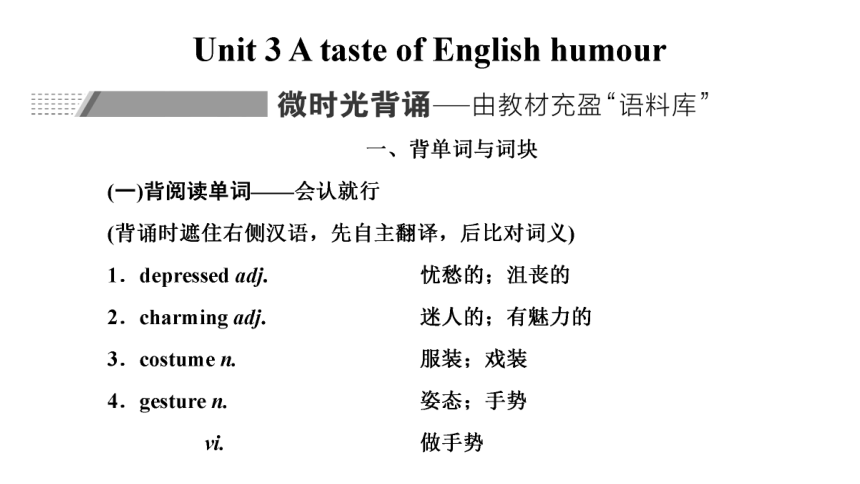 | |
| 格式 | zip | ||
| 文件大小 | 2.8MB | ||
| 资源类型 | 教案 | ||
| 版本资源 | 人教版(新课程标准) | ||
| 科目 | 英语 | ||
| 更新时间 | 2023-03-31 20:48:15 | ||
图片预览



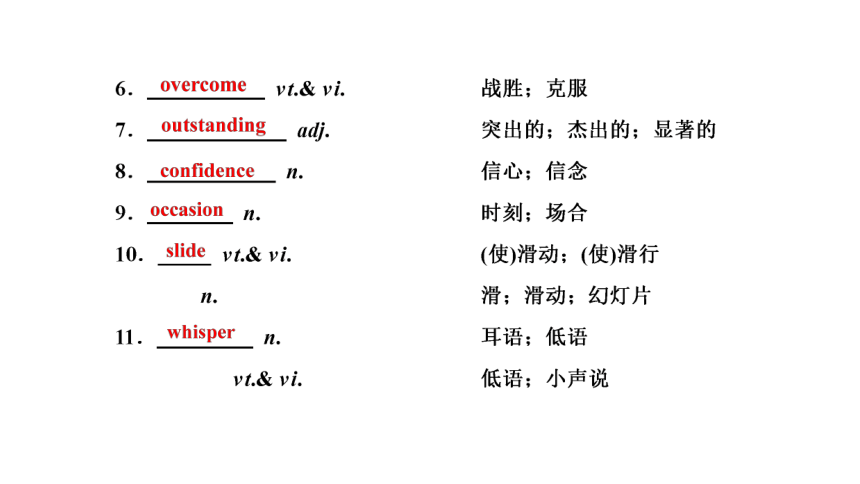

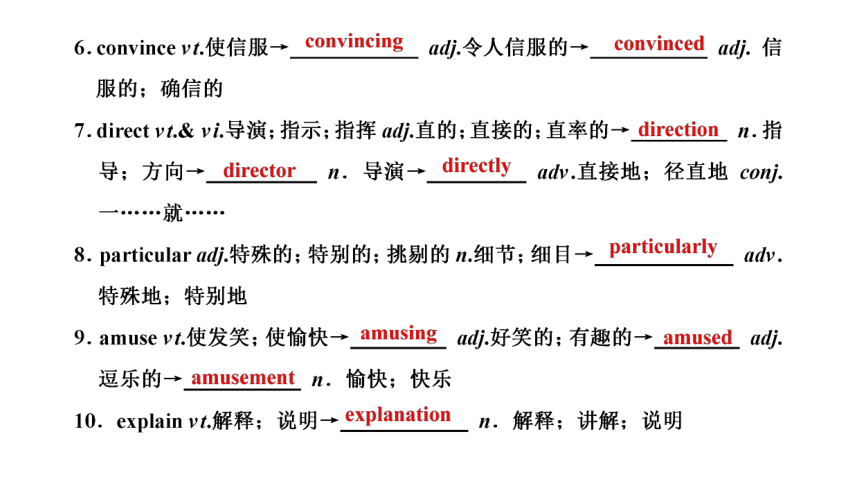

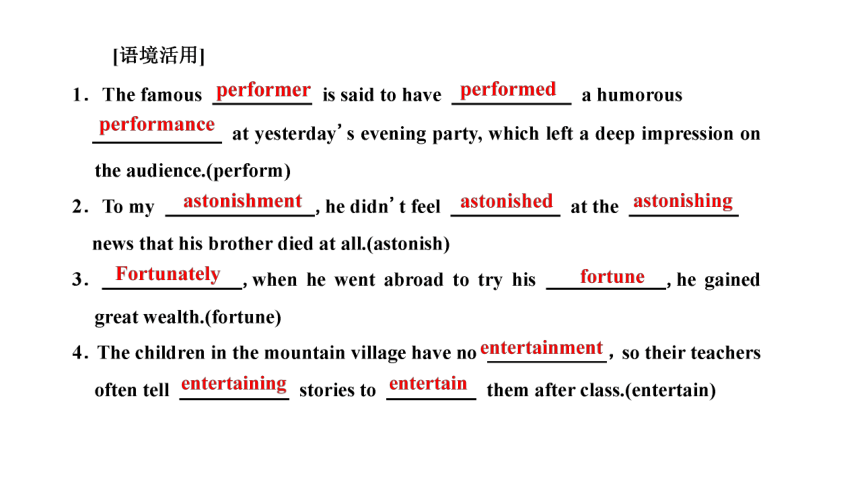
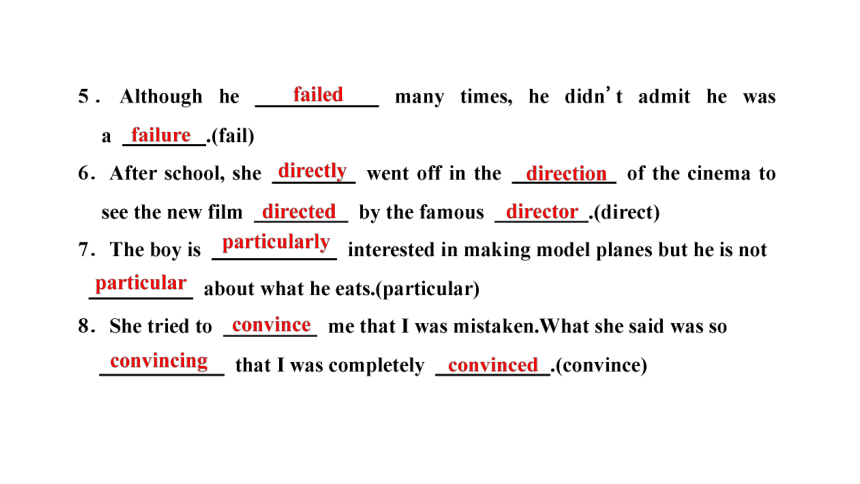

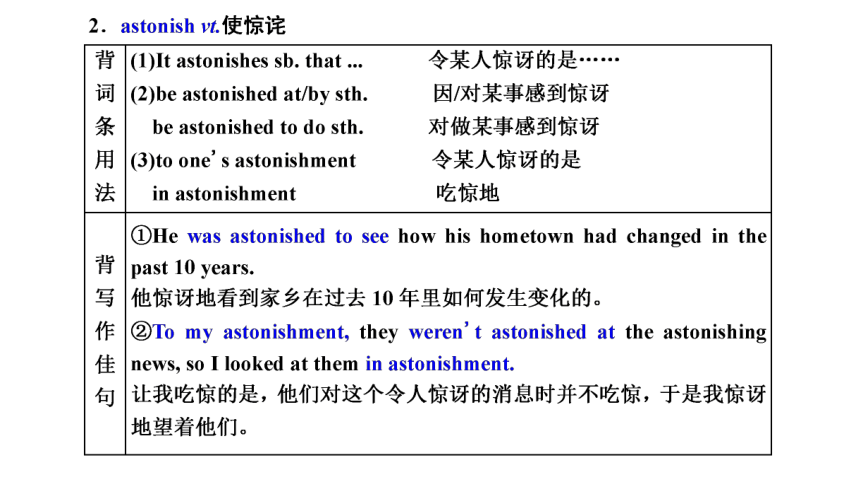

文档简介
(共71张PPT)
学案(三) 高考语篇的价值发掘——提升学科素养
(2020·浙江7月高考·阅读理解A篇)对接主题:小说、戏剧、诗歌、传记、文学简史、经典演讲、文学名著等
I am an active playgoer and play-reader, and perhaps my best reason for editing this book is a hope of sharing my enthusiasm for the theater with others. To do this I have searched through dozens of plays to find the ones that I think best show the power and purpose of the short play.
Each play has a theme or central idea which the playwright (剧作家) hopes to get across through dialogue and action. A few characters are used to create a single impression growing out of the theme. It is not my intention to point out the central theme of each of the plays in this collection, for that would, indeed, ruin the pleasure of reading, discussing, and thinking about the plays and the effectiveness of the playwright.However, a variety of types is represented here. These include comedy, satire, poignant drama, historical and regional drama. To show the versatility (多面性) of the short play, I have included a guidance play, a radio play and a television play.
Among the writers of the plays in this collection, Paul Green, Susan Glaspell, Maxwell Anderson, Thornton Wilder, William Saroyan, and Tennessee Williams have all received Pulitzer Prizes for their contributions to the theater. More information about the playwrights will be found at the end of this book.
To get the most out of reading these plays, try to picture the play on stage, with you, the reader, in the audience. The houselights dim (变暗). The curtains are about to open, and in a few minutes the action and dialogue will tell you the story.
?好题不厌百回做,每做一次都有新发现
语篇解读:本文是一篇说明文,是作者编辑的一本书的序言部分。文章介绍了这本书的编写目的、主要内容以及欣赏本书的建议等。
1.What do we know about the author from the first paragraph
A.He has written dozens of plays.
B.He has a deep love for the theater.
C.He is a professional stage actor.
D.He likes reading short plays to others.
解析:细节理解题。根据第一段中的“I am an active playgoer and play-reader ... for the theater”可知,作者非常热爱戏剧,对戏剧充满热情,故选B 项。
答案:B
2.What does the author avoid doing in his work
A.Stating the plays' central ideas.
B.Selecting works by famous playwrights.
C.Including various types of plays.
D.Offering information on the playwrights.
解析:细节理解题。根据第二段中的 “It is not my intention to point out the central theme of each of the plays”可知,作者在其作品中不言明所选戏剧的中心思想,故选A项。
答案:A
3.What does the author suggest readers do while reading the plays
A.Control their feelings.
B.Apply their acting skills.
C.Use their imagination.
D.Keep their audience in mind.
解析:细节理解题。根据最后一段中的“try to picture the play on stage ...audience”可知,作者建议读者在阅读戏剧的时候,要运用自己的想象力,勾勒出舞台上的戏剧场景,故选C项。
答案:C
4.What is this text
A.A short story.
B.An introduction to a book.
C.A play review.
D.An advertisement for a theater.
解析:推理判断题。根据全文,尤其是第一段中的“my best reason for editing this book”和第三段最后一句可推知,本文是作者对自己编辑的戏剧集的推介,故选B项。
答案:B
?文本精读固基础,高考强调基础扎实
(一)由文本积阅读词汇
1.playgoer n. _________________
2.play-reader n. ___________
3.intention n. _________________
4.effectiveness n. _____
5.comedy n. ____________
戏迷,爱看戏的人
剧本评读人
意图;打算;计划
效力
喜剧;喜剧片
6.satire n. ____________________
7.poignant adj. _______________
8.regional adj. ______________________
9.drama n. _____________________
10.houselights n. ______________
讽刺;讥讽,讽刺作品
悲惨的;辛酸的
地区的;区域的;地方的
戏剧,戏剧艺术;剧本
观众席的灯光
C
A
D
(三)由文本积主题词块
1.share ... with ... ____________________
2.search through _________________
3.dozens of _____________
4.get across ____________________
5.be used to do sth. ____________
6.point out ___________
7.a variety of _________________
8.at the end of ______________________
和……分享/共享……
搜索,搜寻,查找
几十个;许多
(使)被传达,使被理解
被用来做某事
指出,指明
种种,各种各样的
在……尽头,在……最后
(四)用文本词汇替换蓝体词汇
1.We separated into several different search teams to look for the lost boy.______
2.Frankly speaking, I get the impressive idea that he is bored with his job.
___________
3.Last year, he left England with the plan of travelling in Africa. ________
search
impression
intention
(五)在语境中悟微点语法
1.It is not my intention to point out the central theme of each of the plays in this collection, for that would, indeed, ruin the pleasure of reading, discussing, and thinking about the plays and the effectiveness of the playwright.
分析:句中的for为并列连词,表示_____,起补充说明的作用。for连接从句时,它通常放于主句之后,并且用____将其与主句隔开。
原因
逗号
[对点练] 完成句子
①He could not have seen me,_________________ .
他不可能看到我,因为我没在那儿。
②He seldom goes out now,________________ .
他现在很少出去,因为太老了。
③He had a strong desire to have a home of his own,__________________________
_______.
他强烈渴望拥有一个自己的家,因为他一直在和别人同住。
for I was not there
for he is very old
for he had always lived with
others
2.More information about the playwrights will be found at the end of this book.
分析:本句使用的时态为一般将来时的被动语态。一般将来时的被动语态表示将来发生的动作或存在的状况且主语是动作的承受者。其构成形式是“shall/will+be+done”。
注意:在时间、条件状语从句中,常用一般现在时的被动语态代替一般将来时的被动语态。
[对点练] 将下面的主动语态改为被动语态
①It is obvious that we will show the film next Thursday.
→________________________________________________
②The manager shall punish us if we break the rule.
→ _________________________________________________
③If you give me enough time, I will go to Beijing for my holiday.
→ ___________________________________________________
It is obvious that the film will be shown next Thursday.
We shall be punished by the manager if we break the rule.
If I am given enough time, I will go to Beijing for my holiday.
(六)在语境中赏表达之美
1.(赏用词之美)To get the most out of reading these plays, try to picture the play on stage, with you, the reader, in the audience.
赏析:作者通过picture(想象)熟词生义的用法描绘了一幅生动的舞台场景,意在为读者读好这本书提出建议。
2.(赏意境之美)The houselights dim.The curtains are about to open, and in a few minutes the action and dialogue will tell you the story.
赏析:观众席的灯光暗了下来,幕布即将拉开,几分钟后,动作和对话将向你讲述这个故事。寥寥数语,给读者呈现了一幅戏剧大幕即将拉开的场景。寓情于景,烘托了气氛,引起读者读这本书的兴趣。
“课下主题训练”见“课下主题训练(三)”
(单击进入电子文档)
谢 谢 观 看
学案(三) 高考语篇的价值发掘——提升学科素养
(2020·浙江7月高考·阅读理解A篇)对接主题:小说、戏剧、诗歌、传记、文学简史、经典演讲、文学名著等
I am an active playgoer and play-reader, and perhaps my best reason for editing this book is a hope of sharing my enthusiasm for the theater with others. To do this I have searched through dozens of plays to find the ones that I think best show the power and purpose of the short play.
Each play has a theme or central idea which the playwright (剧作家) hopes to get across through dialogue and action. A few characters are used to create a single impression growing out of the theme. It is not my intention to point out the central theme of each of the plays in this collection, for that would, indeed, ruin the pleasure of reading, discussing, and thinking about the plays and the effectiveness of the playwright.However, a variety of types is represented here. These include comedy, satire, poignant drama, historical and regional drama. To show the versatility (多面性) of the short play, I have included a guidance play, a radio play and a television play.
Among the writers of the plays in this collection, Paul Green, Susan Glaspell, Maxwell Anderson, Thornton Wilder, William Saroyan, and Tennessee Williams have all received Pulitzer Prizes for their contributions to the theater. More information about the playwrights will be found at the end of this book.
To get the most out of reading these plays, try to picture the play on stage, with you, the reader, in the audience. The houselights dim (变暗). The curtains are about to open, and in a few minutes the action and dialogue will tell you the story.
?好题不厌百回做,每做一次都有新发现
语篇解读:本文是一篇说明文,是作者编辑的一本书的序言部分。文章介绍了这本书的编写目的、主要内容以及欣赏本书的建议等。
1.What do we know about the author from the first paragraph
A.He has written dozens of plays.
B.He has a deep love for the theater.
C.He is a professional stage actor.
D.He likes reading short plays to others.
解析:细节理解题。根据第一段中的“I am an active playgoer and play-reader ... for the theater”可知,作者非常热爱戏剧,对戏剧充满热情,故选B 项。
答案:B
2.What does the author avoid doing in his work
A.Stating the plays' central ideas.
B.Selecting works by famous playwrights.
C.Including various types of plays.
D.Offering information on the playwrights.
解析:细节理解题。根据第二段中的 “It is not my intention to point out the central theme of each of the plays”可知,作者在其作品中不言明所选戏剧的中心思想,故选A项。
答案:A
3.What does the author suggest readers do while reading the plays
A.Control their feelings.
B.Apply their acting skills.
C.Use their imagination.
D.Keep their audience in mind.
解析:细节理解题。根据最后一段中的“try to picture the play on stage ...audience”可知,作者建议读者在阅读戏剧的时候,要运用自己的想象力,勾勒出舞台上的戏剧场景,故选C项。
答案:C
4.What is this text
A.A short story.
B.An introduction to a book.
C.A play review.
D.An advertisement for a theater.
解析:推理判断题。根据全文,尤其是第一段中的“my best reason for editing this book”和第三段最后一句可推知,本文是作者对自己编辑的戏剧集的推介,故选B项。
答案:B
?文本精读固基础,高考强调基础扎实
(一)由文本积阅读词汇
1.playgoer n. _________________
2.play-reader n. ___________
3.intention n. _________________
4.effectiveness n. _____
5.comedy n. ____________
戏迷,爱看戏的人
剧本评读人
意图;打算;计划
效力
喜剧;喜剧片
6.satire n. ____________________
7.poignant adj. _______________
8.regional adj. ______________________
9.drama n. _____________________
10.houselights n. ______________
讽刺;讥讽,讽刺作品
悲惨的;辛酸的
地区的;区域的;地方的
戏剧,戏剧艺术;剧本
观众席的灯光
C
A
D
(三)由文本积主题词块
1.share ... with ... ____________________
2.search through _________________
3.dozens of _____________
4.get across ____________________
5.be used to do sth. ____________
6.point out ___________
7.a variety of _________________
8.at the end of ______________________
和……分享/共享……
搜索,搜寻,查找
几十个;许多
(使)被传达,使被理解
被用来做某事
指出,指明
种种,各种各样的
在……尽头,在……最后
(四)用文本词汇替换蓝体词汇
1.We separated into several different search teams to look for the lost boy.______
2.Frankly speaking, I get the impressive idea that he is bored with his job.
___________
3.Last year, he left England with the plan of travelling in Africa. ________
search
impression
intention
(五)在语境中悟微点语法
1.It is not my intention to point out the central theme of each of the plays in this collection, for that would, indeed, ruin the pleasure of reading, discussing, and thinking about the plays and the effectiveness of the playwright.
分析:句中的for为并列连词,表示_____,起补充说明的作用。for连接从句时,它通常放于主句之后,并且用____将其与主句隔开。
原因
逗号
[对点练] 完成句子
①He could not have seen me,_________________ .
他不可能看到我,因为我没在那儿。
②He seldom goes out now,________________ .
他现在很少出去,因为太老了。
③He had a strong desire to have a home of his own,__________________________
_______.
他强烈渴望拥有一个自己的家,因为他一直在和别人同住。
for I was not there
for he is very old
for he had always lived with
others
2.More information about the playwrights will be found at the end of this book.
分析:本句使用的时态为一般将来时的被动语态。一般将来时的被动语态表示将来发生的动作或存在的状况且主语是动作的承受者。其构成形式是“shall/will+be+done”。
注意:在时间、条件状语从句中,常用一般现在时的被动语态代替一般将来时的被动语态。
[对点练] 将下面的主动语态改为被动语态
①It is obvious that we will show the film next Thursday.
→________________________________________________
②The manager shall punish us if we break the rule.
→ _________________________________________________
③If you give me enough time, I will go to Beijing for my holiday.
→ ___________________________________________________
It is obvious that the film will be shown next Thursday.
We shall be punished by the manager if we break the rule.
If I am given enough time, I will go to Beijing for my holiday.
(六)在语境中赏表达之美
1.(赏用词之美)To get the most out of reading these plays, try to picture the play on stage, with you, the reader, in the audience.
赏析:作者通过picture(想象)熟词生义的用法描绘了一幅生动的舞台场景,意在为读者读好这本书提出建议。
2.(赏意境之美)The houselights dim.The curtains are about to open, and in a few minutes the action and dialogue will tell you the story.
赏析:观众席的灯光暗了下来,幕布即将拉开,几分钟后,动作和对话将向你讲述这个故事。寥寥数语,给读者呈现了一幅戏剧大幕即将拉开的场景。寓情于景,烘托了气氛,引起读者读这本书的兴趣。
“课下主题训练”见“课下主题训练(三)”
(单击进入电子文档)
谢 谢 观 看
同课章节目录
